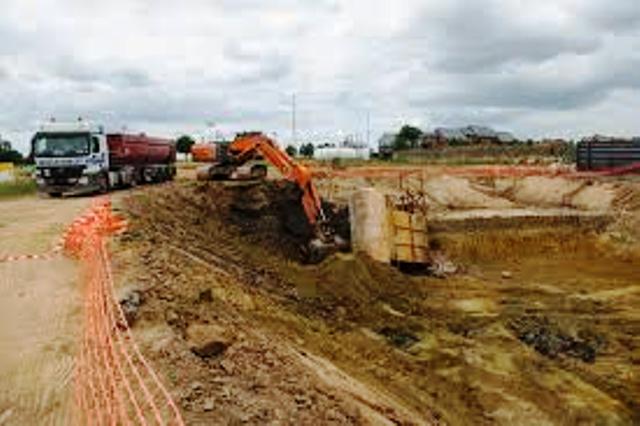Summary
– Decontamination: a measure framed by the law
– Decontamination: soil contamination liability
– Soil decontamination techniques
At the end of a demolition site, one must proceed to the:
– clearing of rubble,
– decontamination if necessary.
Some soils are polluted by the activity that took place before demolition: they must then be decontaminated.
Decontamination: a measure regulated by law
There is a law governing the decontamination of soil after a demolition site.
This law was created to:
– protect, rehabilitate and reuse land,
– force companies:
◦ to define their land when they close,
◦ to monitor the quality of groundwater, particularly where sources of pollution may contaminate a nearby drinking water intake,
– warn the inhabitants concerned of the contamination of a plot of land: by giving town halls the possibility of drawing up a list of contaminated land located on their territory,
– ask for an expert when applying for a building permit.
Soil evaluation
A soil evaluation should be carried out according to:
– toxicological risks,
– risks concerning impacts on groundwater.
Note: Limitations on the use of these lands will be recorded in the land registry.
Decontamination: soil contamination liability
Any person who has or has had custody of contaminated land, as owner, tenant or otherwise, may be held responsible for the rehabilitation of that land.
Not to be worried are those who:
– were not in a position to know of the presence of contaminants in the land because of circumstances, uses or duty of care,
– have acted, in the custody of this land, in accordance with the law, including their duty of care and diligence,
– or when the presence of contaminants in the land is the result of migration from the outside and is attributable to a third party.
Soil decontamination techniques

Decontamination must be carried out by qualified companies.
The methods used will vary depending on:
– the nature of the pollution,
– of the type of soil being polluted.
Here is a summary table of the methods used to decontaminate a site:
DECONTAMINATION: METHODS
| Types of remediation | Explanations | Advantages and Disadvantages |
|---|---|---|
| Clean-up by replacement | Stripping of the contaminated soil over the entire polluted thickness and replacement of the removed soil with healthy soil. | – High cost of the operation. – Polluted soil is considered industrial waste from the moment it is moved. |
| Physico-chemical decontamination | Injection of a liquid or gas under pressure to dissolve pollutants. | – On-site treatment. – The pollutant must be known. |
| Vacuum extraction | – Treatment by vacuum pump. – Vapors treated by catalytic oxidation. – Absorption by activated carbon. | Only on sandy grounds. |
| Extraction by injection | Pressurized injection of air, nitrogen or steam. | Treatment only possible on air-permeable soils. |
| Electrical Extraction | – Implantation of porous electrodes to: ◦ generate an electric current, ◦ dislodge ions to the opposite charge electrodes. – Pollutant recovery is done by pumping. | Only for ionized pollutants: – heavy metals, – organic ions. |
| Extraction by heating or thermal desorption | Consists of heating the earth to temperatures ranging from 80°C to 450°C to evaporate pollutants. | – Suitable for all pollutants apart from heavy metals. – Very advantageous: guaranteed result in a very short time (a few weeks). |
| Washing the floor | The washing can be done: – at high pressure, – at normal pressure. | Limited remediation. |
| Biological decontamination | Depollution mode with biological filters. | – Disadvantages: risk of proliferation of micro-organisms. – Inoperative on too heavy pollution. |
| Plant Remediation | – Some plants are able to stabilize in their cells: ◦ heavy metals, ◦ polluting organic compounds. – Depollution with the help of enzymes; these plants are chosen according to: ◦ their size, ◦ the ability of their roots to burrow deep into the soil to reach the polluted layers. | Advantage: very ecological. |